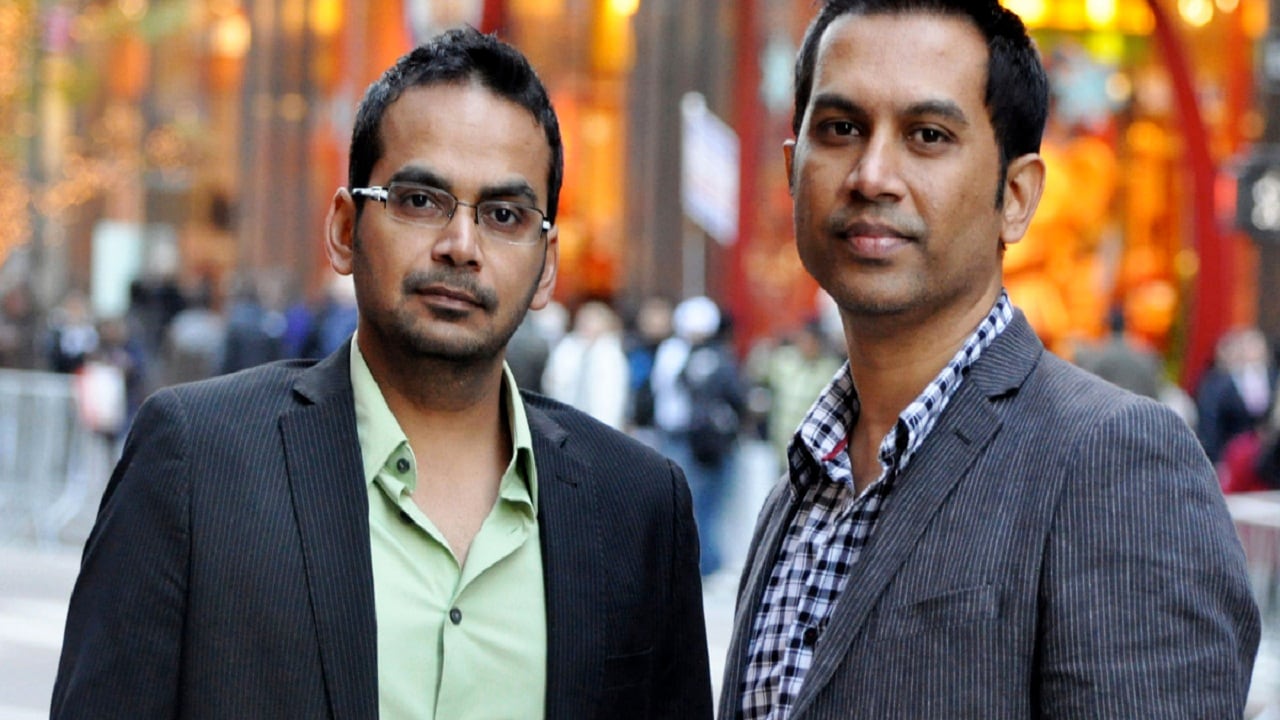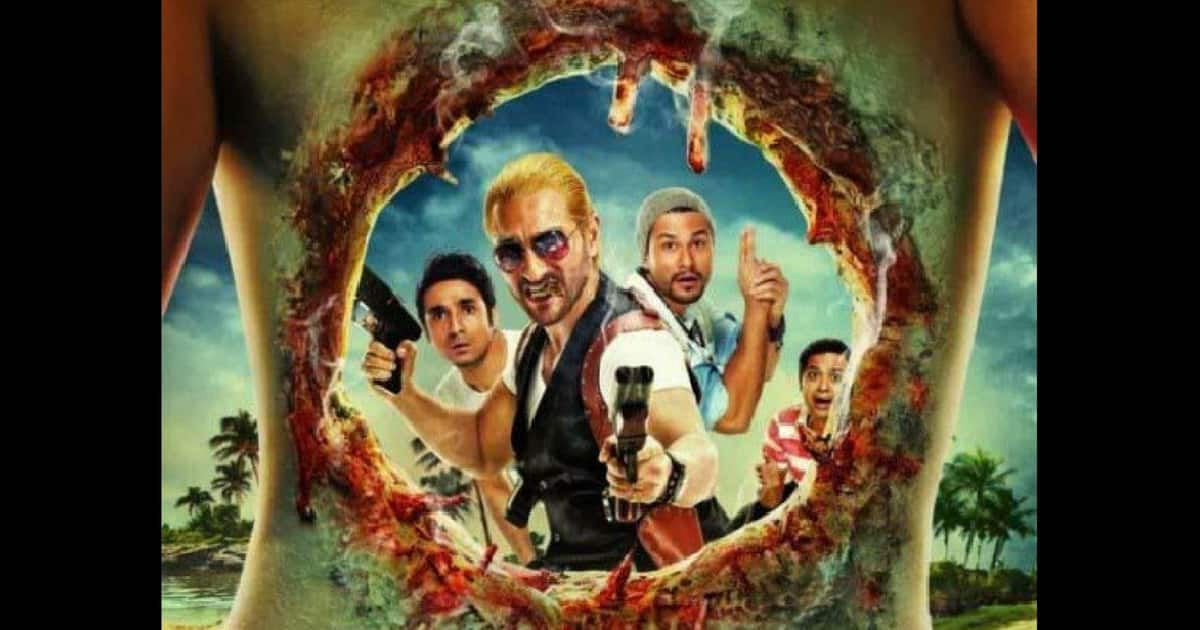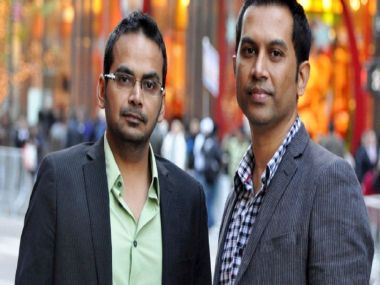About 20 years ago, on a Mahashivratri night, engineering college classmates and future filmmakers Raj Nidimoru and Krishna DK (popularly known as Raj and DK) came across many locals in their hometown Tirupati (Andhra Pradesh), who spoke of a female spirit, “who was whisking away men in the dead of the night”. The locals protected themselves by writing — “Stree re pura” (Telugu phrase, which means stree, come tomorrow) on the walls of their homes. “We saw this phenomenon happening to us when we were in college. We found it weird, funny and scary at the same time. The whole idea of writing on the walls was ridiculous! I used to ask people that how did they know that the spirit can read. Somebody said, she doesn’t have a head. They used to call her ‘stree’. We tried to track it but each one had their own story and we realised nobody knows for sure. Some people said it was punar janam (reincarnation), some said it was a ghost, some felt she was a goddess, while some believed that she has come back to take revenge, and she does black magic…,” laughs Nidimoru heartily. [caption id=“attachment_5093451” align=“alignnone” width=“1280”]
 Raj and DK[/caption] “It’s a legend, whatever anybody says, that is what it is. There is nothing based on facts. Even in the film there are varying reports of who she is,” adds DK. The experience stayed with Raj and DK as they left India for work in the US and later embarked on a filmmaking career. They realised that the urban legend went by different names across India. “In Karnataka, they call it Nale ba, whereas in Rajasthan, the same thing happens, apparently in the cold nights of the winter months,” says DK. And since true stories are currently in trend, the duo decided to make a “ridiculous true story”, Stree (released on 31 August), set in Chanderi in Madhya Pradesh. “It was in our heads for a long time. We wrote the script and were looking to direct initially but we were in the middle of a longer project (Amazon web series
The Family Man
with Manoj Bajpayee). But it was an apt time. Amar (Kaushik, director) was our first AD (Assistant director) for Go Goa Gone. He wanted to direct a film and so we told him to helm it while we produced the film. Amar was excited because he shares the same kind of humour. It is one of a kind horror comedy, and we didn’t know if more horror comedies will come and saturate the market. We like mixing genres, so we thought this particular mix hasn’t happened and so we wanted to get it out than wait for a longer time. A lot of creative standpoint has come from us because we wrote the script," said Nidimoru. Adds DK, “There are lot of horror comedies being made in the South but somehow it isn’t there in Bollywood unless you want to call Golmaal Returns
a horror comedy. Now, directors are experimenting but for us, it has always been what else can we do instead of making the same thing. So we got stuck on this.” And even as Rajkummar Rao is known more for dramas, he was their first choice. “Because even in his dramatic act, there is an element of humour. As soon as we finished the script, Raj was the first person we spoke to. He loved the story and he never asked who was making it. Shraddha (Kapoor) provides that enigma to the character. We don’t know what or who she is in the film. She was laughing her guts out when she heard the story,” says Nidimoru. The director duo is also working on the first draft of the Go Goa Gone
sequel’s screenplay. The film will go on floors early next year. Saif Ali Khan is set to return as the Russian-but-Indian zombie slayer-cum-drug lord Boris. The other principal cast members will return as well, they say while revealing that Go Goa Gone was not planned as a zombie comedy. “We had initially envisioned it as just a stoner flick, a slacker movie. These guys are like lazy bums who are just stoned out,” Nidimoru said, further adding. “And the stoners are suddenly in a foreign land facing a foreign object, which became zombies. We may have an additional character this time, probably an A-list actress… We are still figuring out.” Incidentally, the directors are far more confident of the sequel as they realise that “the film is ageing well”. “Also, five years is a perfect period for sequel. In case of Go Goa Gone, we have been noticing that as time is progressing more, and more people are appreciating it, possibly more than on the Friday of its release. If it had come last year or this year, it would have done still better. We never made it planning a sequel but it is nice that every year people keep reminding us to make a sequel which gave us that push to make one,” says DK. “When I met the boys, Kunal (Kemmu), Vir (Das) and Anand (Tiwari), recently, the first thing they said the expectations people have from this cult hit, and I told them, ‘Thank you for the pressure, we will try our best’. Saif’s excited. There are three to four awesome roles that he has done in his career, definitely Boris is one of those,” he adds. [caption id=“attachment_5093241” align=“alignnone” width=“1200”]
Raj and DK[/caption] “It’s a legend, whatever anybody says, that is what it is. There is nothing based on facts. Even in the film there are varying reports of who she is,” adds DK. The experience stayed with Raj and DK as they left India for work in the US and later embarked on a filmmaking career. They realised that the urban legend went by different names across India. “In Karnataka, they call it Nale ba, whereas in Rajasthan, the same thing happens, apparently in the cold nights of the winter months,” says DK. And since true stories are currently in trend, the duo decided to make a “ridiculous true story”, Stree (released on 31 August), set in Chanderi in Madhya Pradesh. “It was in our heads for a long time. We wrote the script and were looking to direct initially but we were in the middle of a longer project (Amazon web series
The Family Man
with Manoj Bajpayee). But it was an apt time. Amar (Kaushik, director) was our first AD (Assistant director) for Go Goa Gone. He wanted to direct a film and so we told him to helm it while we produced the film. Amar was excited because he shares the same kind of humour. It is one of a kind horror comedy, and we didn’t know if more horror comedies will come and saturate the market. We like mixing genres, so we thought this particular mix hasn’t happened and so we wanted to get it out than wait for a longer time. A lot of creative standpoint has come from us because we wrote the script," said Nidimoru. Adds DK, “There are lot of horror comedies being made in the South but somehow it isn’t there in Bollywood unless you want to call Golmaal Returns
a horror comedy. Now, directors are experimenting but for us, it has always been what else can we do instead of making the same thing. So we got stuck on this.” And even as Rajkummar Rao is known more for dramas, he was their first choice. “Because even in his dramatic act, there is an element of humour. As soon as we finished the script, Raj was the first person we spoke to. He loved the story and he never asked who was making it. Shraddha (Kapoor) provides that enigma to the character. We don’t know what or who she is in the film. She was laughing her guts out when she heard the story,” says Nidimoru. The director duo is also working on the first draft of the Go Goa Gone
sequel’s screenplay. The film will go on floors early next year. Saif Ali Khan is set to return as the Russian-but-Indian zombie slayer-cum-drug lord Boris. The other principal cast members will return as well, they say while revealing that Go Goa Gone was not planned as a zombie comedy. “We had initially envisioned it as just a stoner flick, a slacker movie. These guys are like lazy bums who are just stoned out,” Nidimoru said, further adding. “And the stoners are suddenly in a foreign land facing a foreign object, which became zombies. We may have an additional character this time, probably an A-list actress… We are still figuring out.” Incidentally, the directors are far more confident of the sequel as they realise that “the film is ageing well”. “Also, five years is a perfect period for sequel. In case of Go Goa Gone, we have been noticing that as time is progressing more, and more people are appreciating it, possibly more than on the Friday of its release. If it had come last year or this year, it would have done still better. We never made it planning a sequel but it is nice that every year people keep reminding us to make a sequel which gave us that push to make one,” says DK. “When I met the boys, Kunal (Kemmu), Vir (Das) and Anand (Tiwari), recently, the first thing they said the expectations people have from this cult hit, and I told them, ‘Thank you for the pressure, we will try our best’. Saif’s excited. There are three to four awesome roles that he has done in his career, definitely Boris is one of those,” he adds. [caption id=“attachment_5093241” align=“alignnone” width=“1200”]
 A promotional still of Go Goa Gone. Twitter[/caption] But what is keeping Raj and DK busier these days is the 10-episode Amazon Prime web series, The Family Man, set in Mumbai. Co-written (with novelist Suman Kumar and dialogue writer Sumit Arora), directed, and produced by Raj and DK, The Family Man has been described as the story of a “middle-class guy, a world-class spy”, played by Manoj Bajpayee. “We have given it an action-drama-crime kind of a treatment. It is a gritty, edgy take on counter terrorism and we have deglamourised the people who fight. It is more real and at the same time, it is James Bond living in Chembur. Manoj’s character is someone who worries about home loans and work promotions, deals with his wife and troublesome children, and takes the train daily to his office,” says Nidimoru. The series, that will be ready by September-end, draws from contemporary geopolitical issues, and most plot threads are inspired from newspaper headlines over the years, DK added. “A large chunk is set in Kashmir. We also have lot of actors from across the country, from Malayalam, Telugu, Tamil, Bengali cinema, and everybody speaks their language. It was conceived as a pan-India film, and the plot requirement goes all the way from Kerala to Kashmir,” say the director duo. Attributing their previous release, A Gentleman’s failure to the shift in audience taste from glamorous films set in foreign locales to rooted indigenous stories, Nidimoru says, “We realised we are making a commercial film for a much wider audience. So there is a sense of expectation, sense of requirement within a project. So you need to have song and dance, lots of action, humour… Maybe we as filmmakers can balance it better but that was our first stint at something like that.” However, the director duo describe the current phase as their best. “We are enjoying this year a lot in terms of independence and flexibility. We’re getting to do what we want. In fact, our film industry is in one of the unique phases as compared to the rest of the world. The whole world is going towards OTT, staying at home and watching online, watching 15 superheroes fighting each other. They aren’t interested in watching humans anymore outside of India and because of that we are in a great position that we can make human dramas, small films, big films and still get audience to theatres. So, we must enjoy this final honeymoon phase of cinema in theatres,” say Raj and DK. They also plan to revisit their old project Farzi, which was in the news as far back as 2014. Many different actors like Shahid Kapoor, Arjun Kapoor and Kriti Sanon have been attached to the film from time to time, but Raj and DK are yet to find the right team to work with. “It’s a mix of genres. It’s one of our strongest scripts and we want to do it right,” they say, signing off.
A promotional still of Go Goa Gone. Twitter[/caption] But what is keeping Raj and DK busier these days is the 10-episode Amazon Prime web series, The Family Man, set in Mumbai. Co-written (with novelist Suman Kumar and dialogue writer Sumit Arora), directed, and produced by Raj and DK, The Family Man has been described as the story of a “middle-class guy, a world-class spy”, played by Manoj Bajpayee. “We have given it an action-drama-crime kind of a treatment. It is a gritty, edgy take on counter terrorism and we have deglamourised the people who fight. It is more real and at the same time, it is James Bond living in Chembur. Manoj’s character is someone who worries about home loans and work promotions, deals with his wife and troublesome children, and takes the train daily to his office,” says Nidimoru. The series, that will be ready by September-end, draws from contemporary geopolitical issues, and most plot threads are inspired from newspaper headlines over the years, DK added. “A large chunk is set in Kashmir. We also have lot of actors from across the country, from Malayalam, Telugu, Tamil, Bengali cinema, and everybody speaks their language. It was conceived as a pan-India film, and the plot requirement goes all the way from Kerala to Kashmir,” say the director duo. Attributing their previous release, A Gentleman’s failure to the shift in audience taste from glamorous films set in foreign locales to rooted indigenous stories, Nidimoru says, “We realised we are making a commercial film for a much wider audience. So there is a sense of expectation, sense of requirement within a project. So you need to have song and dance, lots of action, humour… Maybe we as filmmakers can balance it better but that was our first stint at something like that.” However, the director duo describe the current phase as their best. “We are enjoying this year a lot in terms of independence and flexibility. We’re getting to do what we want. In fact, our film industry is in one of the unique phases as compared to the rest of the world. The whole world is going towards OTT, staying at home and watching online, watching 15 superheroes fighting each other. They aren’t interested in watching humans anymore outside of India and because of that we are in a great position that we can make human dramas, small films, big films and still get audience to theatres. So, we must enjoy this final honeymoon phase of cinema in theatres,” say Raj and DK. They also plan to revisit their old project Farzi, which was in the news as far back as 2014. Many different actors like Shahid Kapoor, Arjun Kapoor and Kriti Sanon have been attached to the film from time to time, but Raj and DK are yet to find the right team to work with. “It’s a mix of genres. It’s one of our strongest scripts and we want to do it right,” they say, signing off.
Raj and DK on horror comedy Stree, Amazon Prime series The Family Man and the Go Goa Gone sequel
Seema Sinha
• September 1, 2018, 13:12:25 IST
Stree writers Raj and DK explain why they wrote the horror comedy based on ghost stories they heard during their college days, but could not direct it.
Advertisement
)
End of Article